In December 2015, Norman Redhead gave a talk on the History of Oldknow's Lime Kilns, this is the report of that meeting:
There are three main elements in the project for Revealing Oldknow’s Legacy - Marple Aqueduct, Mellor Mill and the Lime Kilns. The aqueduct is well-known and has just been repaired; excavations at Mellor Mill are well under way; but what about the Lime Kilns? Do they deserve more prominence and is anything happening to make them more accessible?
Who better than the County Archaeologist for Greater Manchester, Norman Redhead to explain ...
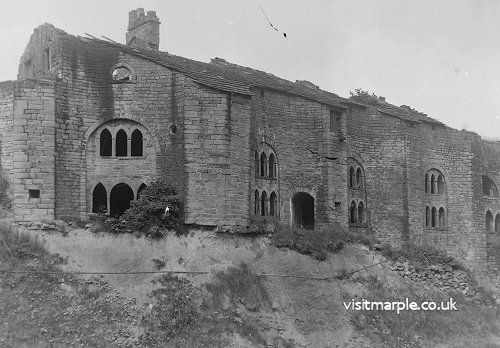
An image of the Lime Kilns from a glass negative,showing the scale of the working kilns.
Norman began by explaining just what a unique asset we had in the community. It was, and still is, one of the largest complexes in the country. It was notable for its gothic architecture, a statement of confidence and grandeur as it stared across the Goyt valley towards Mellor. And, uniquely, it incorporated housing in its design from the start.
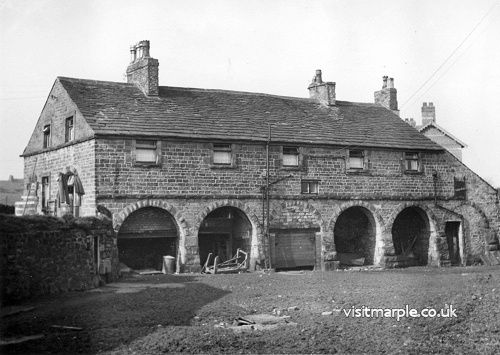 Lime loading shed where the carts loaded with burnt lime under cover.It was constructed over a period of five years from 1798 to 1803 in three separate phases and ancillary buildings followed. It was well thought out as from the start the raw materials of coal and limestone were brought by two canal arms within close proximity of the kilns to allow easy loading. The lime was unloaded from the base of the kilns, fifty feet below, and was taken away at that level. At first, whilst the locks were being built, there were private sidings leading into the main tramway going down to the lower canal level but, once the locks were complete, Oldknow had an arm of the canal excavated from Lock Twelve to the works. It was at this time that Posset Bridge got its name - Samuel Oldknow was so keen to be the first user of the new flight of locks that he encouraged the navvies excavating his private canal arm with a posset of ale. It was obviously an effective encouragement as his boat “Perseverance” was the first down the completed locks.
Lime loading shed where the carts loaded with burnt lime under cover.It was constructed over a period of five years from 1798 to 1803 in three separate phases and ancillary buildings followed. It was well thought out as from the start the raw materials of coal and limestone were brought by two canal arms within close proximity of the kilns to allow easy loading. The lime was unloaded from the base of the kilns, fifty feet below, and was taken away at that level. At first, whilst the locks were being built, there were private sidings leading into the main tramway going down to the lower canal level but, once the locks were complete, Oldknow had an arm of the canal excavated from Lock Twelve to the works. It was at this time that Posset Bridge got its name - Samuel Oldknow was so keen to be the first user of the new flight of locks that he encouraged the navvies excavating his private canal arm with a posset of ale. It was obviously an effective encouragement as his boat “Perseverance” was the first down the completed locks.
The kilns had a mixed commercial life. By 1802 they were producing 1200 tons per month and the lime was being shipped to the growing towns of Lancashire for building and for the new industries. About one third was used for agriculture to moderate the acidic soils and to make the earth more friable. By 1811 Oldknow leased the works as he developed other interests but he refused an offer of purchase by the Peak Forest Canal - he was only prepared to lease. After Samuel’s death ownership passed to the Arkwright family and they were managed by John Clayton &Co. who also ran Mellor Mill. Later in the century other operators took over and the works eventually closed in 1896.
Because of their national impo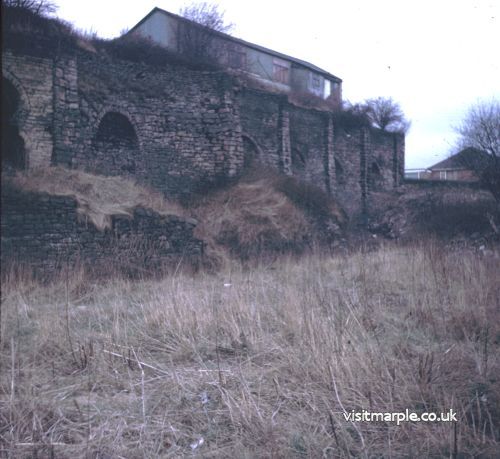
Neil Mullineux, December 2015
Further reading:
- Oldknow's Lime Kilns on England's at risk heritage sites,
- Marple Lime Works, Mineral Mill & Brick Works on Peter Whitehead's excellent website.
- Marple Lime Kilns on The Marple Website
NEWS: 6th September 2022
Developments at Marple Lime Kilns
Maysand, who are specialists in restoration of ancient monuments, are about to start work at the end of August to repair the façade of the lime-kilns off Strines Road, Marple, which has had bits falling off for quite some time, suggesting imminent danger of collapse! While doing this work they will go inside the kiln tunnels to see what needs to be done to stabilise the structure.
Finance for the project has come from a variety of sources:
- 75% from Historic England.
- 10% from Stockport Metropolitan Borough (who own the site).
- 15% from Association of Industrial Archaeologists, Mellor Archaeological Trust, Macnair Trust and FOLK itself.
Friends of the Lime Kilns (FOLK) have organised the project. A WhatsApp group has been created, to keep people informed of progress. During the course of the project there will be a workshop in the use of lime mortar. Details of this will be announced on the WhatsApp group nearer the time.
This is the latest development in investigations of the lime kilns, which started in the 1970s when Marple Local History Society raised concerns about the stability of the structure.
Archaeological Dig at Oldknow’s Lime Kilns 18-30 April 2022
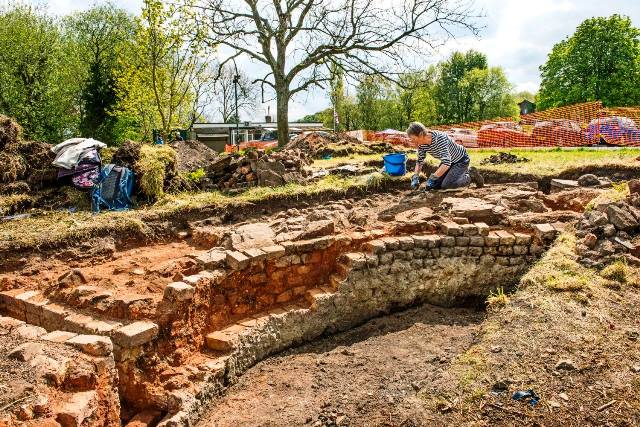
The ‘Revealing Oldknow’s Legacy’ project, which finished in 2018, included exploratory investigations of the bank of limekilns near Top Lock on the Peak Forest Canal. From this a group of interested people banded together as the Friends of the Lime Kilns (FOLK) to further the investigations and work to maintain the kilns. Their most recent endeavour has been a community arc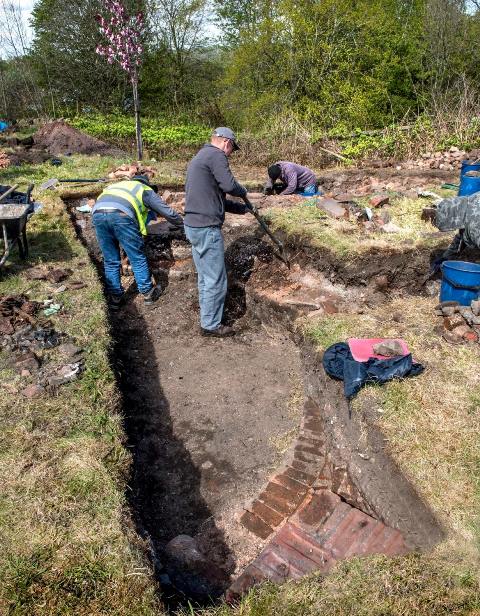 haeological dig at the top of the kilns in the Forces Club car park starting at Easter and finishing with an Open Day on 30 April.
haeological dig at the top of the kilns in the Forces Club car park starting at Easter and finishing with an Open Day on 30 April.
Professionals from the Archaeology Department of Salford University provided technical expertise and organised the day to day running of the dig, while the hard work of digging was done by volunteers who turned up in good numbers (at least 22 of them) keen to find out more about the site. Funding was provided by a variety of interested organisations, including FOLK themselves, Mellor Archaeological Trust, the Macnair Trust, Marple Area Committee, and Association of Industrial Archaeologists.
Over the fortnight the tops of several of the kilns were opened, showing the method of construction and lining of handmade local bricks, in some cases vitrified due to the high heat generated during firing, but in remarkably good condition. A canal arm was found which would have allowed boats to take limestone directly to the tops of the kilns, and at one end of the site the shaft of a coal mine was uncovered.
All sorts of artefacts were found, including an axle from a tram tub bogey, and a rather bent piece of tramway rail, bottles, wall tiles, metal bolts, stone roof tiles, a metal spar from the bows of a narrow boat, and lots of bits of brick, many embossed with ‘Tymm’, the name of the people who ran the lime kilns for a substantial part of its existence.
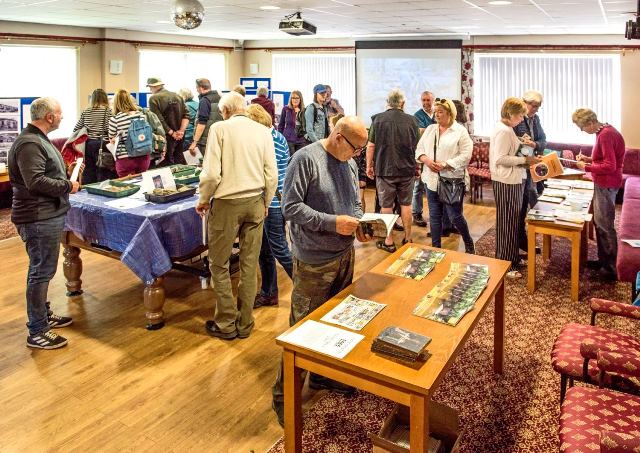
An Open day was held on Saturday 30th and attracted over 200 visitors who were taken on guided tours of the site and could look at the artefacts and pictures connected with the dig.
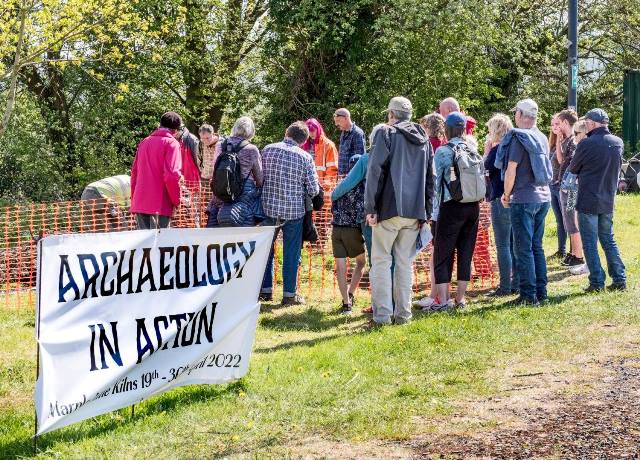 What will happen now? The fortnight’s work has shown that the kilns are in remarkably good condition for their age. The findings will be evaluated to derive a strategy for long term conservation of the historical and archaeological attributes.
What will happen now? The fortnight’s work has shown that the kilns are in remarkably good condition for their age. The findings will be evaluated to derive a strategy for long term conservation of the historical and archaeological attributes.
Anyone interested in playing a part in the future of the kilns is urged to offer their services to FOLK via

